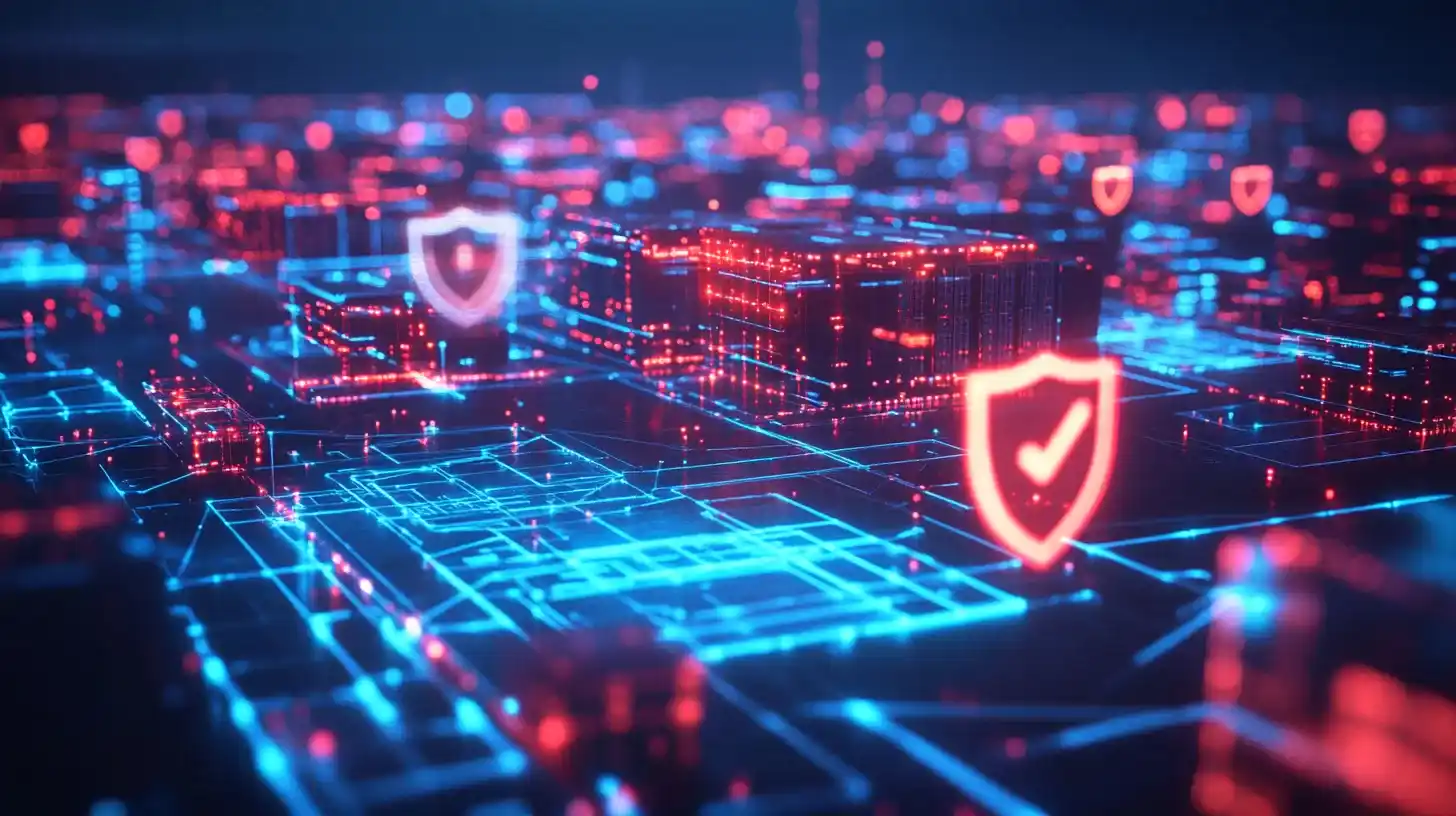Table of Contents
Introduction
In today’s interconnected global economy, the supply chain is the backbone of businesses, connecting raw materials, manufacturing, and distribution. However, this interconnectedness also exposes businesses to a myriad of threats that can disrupt operations, damage reputations, and lead to significant financial losses. Supply chain security has become a paramount concern for organizations of all sizes.
By understanding the emerging threats and implementing effective strategies, businesses can protect their supply chains and ensure their continued success.
Defining Supply Chain Security
Supply chain security refers to protecting the physical and digital assets, information, and processes involved in the flow of goods and services from the raw material stage to the end consumer. It encompasses various activities, including risk assessment, threat mitigation, incident response, and compliance with relevant regulations. In essence, supply chain security is about safeguarding the integrity, confidentiality, and availability of the supply chain.
The Imperative of Addressing Emerging Threats
The landscape of supply chain threats is constantly evolving, with new challenges emerging rapidly. Failing to address these emerging threats can have severe consequences, including:
- Disruptions to operations: Cyberattacks, natural disasters, and other disruptions can halt production, delay deliveries, and damage customer relationships. This can lead to significant financial losses, as well as damage to a company’s reputation. For example, a ransomware attack on a critical supplier could disrupt the entire supply chain, causing production delays and lost sales. Similarly, a natural disaster could damage infrastructure, making it difficult to transport goods and materials.
- Financial losses: The costs associated with supply chain disruptions can be substantial, including lost revenue, increased expenses, and potential legal liabilities. For example, a company may have to pay hefty fines for non-compliance with security regulations, or it may face legal action from customers who suffer losses due to supply chain disruptions.
- Reputational damage: A compromised supply chain can tarnish a company’s brand and erode consumer trust. For example, if a company’s supply chain is involved in a human rights or environmental scandal, it can damage the company’s reputation and lead to boycotts and other forms of consumer backlash.
- Regulatory penalties: Non-compliance with security regulations can result in hefty fines and legal action. For example, companies that fail to comply with data privacy regulations, such as the General Data Protection Regulation (GDPR) or the California Consumer Privacy Act (CCPA), can face significant fines and legal penalties. Additionally, companies that do not have adequate cybersecurity measures in place may be subject to legal action if they suffer a data breach.

Overview of Emerging Threats
To effectively protect supply chains, it is essential to understand the nature and scope of emerging threats.
Cybersecurity Threats
- Ransomware attacks: Malicious actors encrypt critical data and demand a ransom for its release, disrupting operations and causing significant financial losses.
- Phishing schemes: Phishing emails and other social engineering tactics are used to trick employees into revealing sensitive information or clicking on malicious links.
- Supply chain attacks: Attackers compromise third-party suppliers or vendors to gain access to target organizations’ networks.
Physical Security Threats
- Theft and vandalism: Physical security breaches, such as theft of inventory or damage to facilities, can lead to financial losses and operational disruptions.
- Natural disasters: Hurricanes, earthquakes, and other natural disasters can cause significant damage to supply chain infrastructure, leading to delays and disruptions.
- Geopolitical risks: Political instability, trade wars, and other geopolitical events can disrupt supply chains and increase costs.
Regulatory and Compliance Threats
- New regulations: Governments worldwide are increasingly implementing stringent regulations to protect supply chains from various threats, including cybersecurity and human rights abuses.
- Trade wars and tariffs: Economic tensions between countries can lead to trade barriers, tariffs, and disruptions to global supply chains.
- Data privacy regulations: The increasing emphasis on data privacy and protection has led to new regulations, such as the General Data Protection Regulation (GDPR) and the California Consumer Privacy Act (CCPA), that impact supply chain security.
Risk Assessment in Supply Chains
A comprehensive risk assessment is a fundamental step in enhancing supply chain security. It involves:
- Identifying vulnerabilities: Identifying potential weaknesses in the supply chain, such as weak cybersecurity measures, reliance on single suppliers, or inadequate physical security.
- Assessing potential impacts: Evaluating the potential consequences of various threats, including financial losses, operational disruptions, and reputational damage.
- Prioritizing risks: Determining which threats pose the greatest risk to the business and allocating resources accordingly.
- Considering the interconnectedness of risks: Recognizing that supply chain threats are often interconnected and can have cascading effects.
Strategies for Enhancing Supply Chain Security
By implementing effective strategies, businesses can significantly strengthen their supply chain security.
Implementation of Technology
- Blockchain for transparency: Blockchain technology can provide greater transparency and traceability throughout the supply chain, making it easier to identify and address vulnerabilities.
- IoT for real-time monitoring: Internet of Things (IoT) devices can be used to monitor supply chain activities in real-time, detecting anomalies and enabling proactive responses.
- Artificial intelligence (AI) for predictive analytics: AI can be used to analyze data from various sources to identify potential threats and predict future risks.

Employee Training and Awareness Programs
- Educating employees: Providing employees with training on cybersecurity best practices, supply chain security policies, and incident response procedures.
- Raising awareness: Promoting a culture of security awareness within the organization, encouraging employees to report suspicious activities.
- Simulating real-world scenarios: Conducting security drills and simulations to help employees understand their roles in responding to incidents.
Developing Strong Partnerships with Suppliers
- Collaboration: Establishing strong relationships with suppliers and collaborating on security initiatives.
- Shared responsibility: Ensuring that suppliers are committed to implementing robust security measures and sharing information about potential risks.
- Supplier audits: Conduct regular audits of suppliers to assess their security practices and identify potential vulnerabilities.
Incident Response Planning
A well-developed incident response plan is essential for effectively managing and mitigating supply chain security incidents.
- Importance of an incident response plan: A plan outlines the steps to be taken in the event of a security breach, helping to minimize damage and restore operations quickly.
- Key components of an effective plan: A plan should include procedures for identifying and containing incidents, notifying relevant stakeholders, conducting investigations, and restoring operations.
- Regular testing and updates: Incident response plans should be regularly tested and updated to ensure their effectiveness.
- Incorporating lessons learned: Continuously reviewing and updating the plan based on the lessons learned from past incidents.
Case Studies
Successful mitigation of supply chain threats:
- Company A: Faced a significant data breach due to a compromised supplier’s network. By implementing robust security measures, including regular supplier audits and employee training, Company A was able to contain the breach and prevent further damage.
- Company B: Experienced a ransomware attack that disrupted operations for several days. The company’s incident response plan, which included a backup and recovery strategy, allowed it to quickly restore operations and minimize financial losses.
- Company C: Suffered a supply chain disruption due to a natural disaster. The company’s contingency plans, which included alternative sourcing options and disaster recovery facilities, enabled it to continue operations with minimal impact.
Lessons learned from failures:
- Company D: Experienced a major supply chain disruption due to a lack of diversification in its supplier base. The company learned the importance of having multiple suppliers to mitigate risks and ensure business continuity.
- Company E: Suffered a data breach due to weak cybersecurity practices. The company realized the need for ongoing employee training and awareness programs to prevent future incidents.
- Company F: Experienced a supply chain disruption due to a lack of visibility into its supply chain. The company implemented blockchain technology to improve transparency and traceability, enabling them to identify and address potential vulnerabilities.
Case studies of emerging threats:
- Company G: Faced a supply chain attack using AI-powered deepfakes to manipulate supplier communications. The company implemented advanced threat detection tools and employee training to protect against such attacks.
- Company H: Experienced a supply chain disruption due to geopolitical tensions and trade restrictions. The company diversified its supply chain and implemented contingency plans to mitigate risks.
- Company I: Suffered a supply chain disruption due to the emergence of a new malware variant targeting industrial control systems. The company updated its security measures and implemented patch management processes to protect against such threats.
Future Trends in Supply Chain Security
As technology continues to evolve and global challenges persist, the landscape of supply chain security will continue to change.
- Increased automation and AI integration: Automation and artificial intelligence (AI) can be used to enhance supply chain security by automating tasks, detecting anomalies, and improving decision-making.
- Shift towards resilience over efficiency: Businesses will need to focus on building resilient supply chains that can withstand disruptions and recover quickly.
- Evolving regulatory landscape: New regulations and standards will likely emerge, requiring businesses to adapt their security practices.
- Emerging threats: Keep an eye on emerging threats, such as quantum computing and deepfakes, and be prepared to address them as they arise.
Conclusion
In today’s interconnected world, supply chain security is a critical concern for businesses of all sizes. By understanding emerging threats, conducting risk assessments, and implementing effective strategies, organizations can protect their supply chains, mitigate risks, and ensure their long-term success.
Businesses must prioritize supply chain security and invest in the necessary measures to safeguard their operations and reputation.